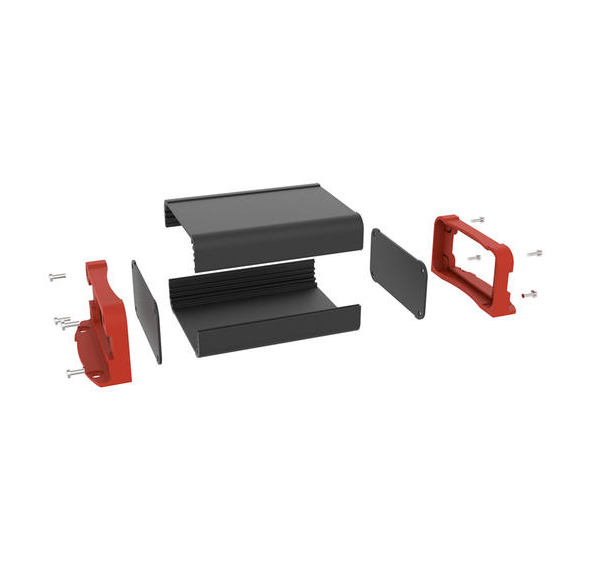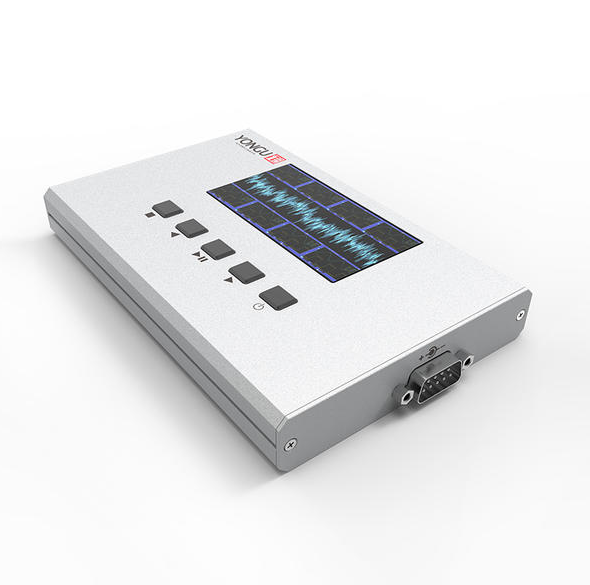The electrical box, often overlooked yet crucial, is the unsung hero behind our power supply. It serves as the cornerstone for electrical systems in homes, offices, and industries. In this post, the author would give a full introduction to the electrical box.
What is the Electrical Box?
An electrical box, also known as a junction box or a breaker box, is a crucial component in electrical systems. It's a container that houses electrical connections, wires, switches, outlets, or circuit breakers. Its primary purpose is to protect and contain electrical connections, ensuring safety by preventing accidental contact with live wires and minimizing the risk of electrical fires.
Electrical boxes come in various shapes and sizes, and their usage depends on the specific requirements of the electrical installation. They can be made of metal or non-metallic materials, and they are usually installed within walls, ceilings, or floors to provide a safe enclosure for electrical connections in residential, commercial, or industrial buildings.
Electrical boxes come in various shapes and sizes, and their usage depends on the specific requirements of the electrical installation. They can be made of metal or non-metallic materials, and they are usually installed within walls, ceilings, or floors to provide a safe enclosure for electrical connections in residential, commercial, or industrial buildings.
What are the Types of Electrical Box?
There are several types of electrical boxes, each designed for specific purposes and installation requirements. Here are some common types:
Switch Boxes: These are used for installing light switches or dimmers. They are typically shallow and have openings for switch toggles or dimmer knobs.
Outlet Boxes: Designed for installing electrical outlets or receptacles. They have space for the outlet to fit securely and accommodate wiring connections.
Ceiling Boxes: These are installed in ceilings and are used for mounting light fixtures, ceiling fans, or hanging pendant lights. They often come in round or octagonal shapes.
Junction Boxes: These boxes are used to contain wire connections. They serve as points where multiple wires are joined together, providing a safe enclosure for these connections.
Floor Boxes: Installed in floors, these boxes are used for outlets in locations where access to power is needed but wall installation is not feasible, such as in open spaces or offices with modular furniture.
Outdoor Boxes: These are weatherproof and designed for outdoor use. They protect electrical connections from moisture, rain, and other environmental elements.
Utility Boxes: These boxes are typically larger and used in industrial settings or where heavy-duty electrical connections are required. They accommodate larger wires and connections.
Fan Boxes: Specifically designed to support the weight and movement of ceiling fans. They are reinforced to ensure safety and stability when installing ceiling fans.
Low-Voltage Boxes: Used for telecommunications, data, or cable connections. They are smaller and designed for low-voltage installations.
Retrofit Boxes: These are designed for installations in existing walls or ceilings where adding a traditional box might be challenging. They are flexible or adjustable to fit into tight spaces.
Switch Boxes: These are used for installing light switches or dimmers. They are typically shallow and have openings for switch toggles or dimmer knobs.
Outlet Boxes: Designed for installing electrical outlets or receptacles. They have space for the outlet to fit securely and accommodate wiring connections.
Ceiling Boxes: These are installed in ceilings and are used for mounting light fixtures, ceiling fans, or hanging pendant lights. They often come in round or octagonal shapes.
Junction Boxes: These boxes are used to contain wire connections. They serve as points where multiple wires are joined together, providing a safe enclosure for these connections.
Floor Boxes: Installed in floors, these boxes are used for outlets in locations where access to power is needed but wall installation is not feasible, such as in open spaces or offices with modular furniture.
Outdoor Boxes: These are weatherproof and designed for outdoor use. They protect electrical connections from moisture, rain, and other environmental elements.
Utility Boxes: These boxes are typically larger and used in industrial settings or where heavy-duty electrical connections are required. They accommodate larger wires and connections.
Fan Boxes: Specifically designed to support the weight and movement of ceiling fans. They are reinforced to ensure safety and stability when installing ceiling fans.
Low-Voltage Boxes: Used for telecommunications, data, or cable connections. They are smaller and designed for low-voltage installations.
Retrofit Boxes: These are designed for installations in existing walls or ceilings where adding a traditional box might be challenging. They are flexible or adjustable to fit into tight spaces.
What are the Uses of the Electrical Box?
Electrical boxes serve several important purposes in electrical systems. In this section, the author would list the main uses of the electrical boxes.
Safety Measures
Electrical boxes are primarily designed to ensure safety in electrical systems. They enclose wiring connections, protecting them from accidental contact, which can cause electric shocks or short circuits. This containment helps prevent injuries and potential fatalities due to electrical accidents.
Protection from Environmental Factors
They shield electrical connections from environmental factors like moisture, dust, or physical impact, which could otherwise compromise the integrity of the wiring or cause electrical malfunctions.
Code Compliance and Standards
Electrical codes mandate the use of electrical boxes as part of safe electrical installations. They ensure that installations are up to standard and compliant with local building codes and regulations.
Device Mounting
These boxes provide a secure mounting platform for switches, outlets, light fixtures, and other electrical devices. This stable installation prevents these components from becoming loose or detached, reducing the risk of accidents.
Cable Management and Organization
They allow for organized and structured cable management. Wires and cables are neatly contained within the box, reducing clutter and making it easier to identify, trace, and work on specific connections.
Facilitate Maintenance and Repairs
Electrical boxes offer easy access to wiring and connections, simplifying maintenance and repair tasks. Electricians can access these points to troubleshoot issues, make repairs, or install additional wiring or devices.
Grounding and Electrical Integrity
These boxes often serve as grounding points, ensuring that electrical systems have proper grounding. Grounding is crucial for safeguarding against electrical faults, surges, and ensuring the stability and integrity of the electrical system.
Fire Prevention and Containment
By containing potential sparks or overheating of wires and connections, electrical boxes help minimize the risk of electrical fires. They prevent these incidents from spreading beyond the enclosed area, limiting damage and protecting occupants.
Conclusion
All in all, the electrical box is a fundamental component of any electrical system, providing protection, connectivity, and organization. Knowing its uses and types empowers individuals to make informed decisions regarding electrical installations, promoting safety and efficiency in both residential and commercial settings.





